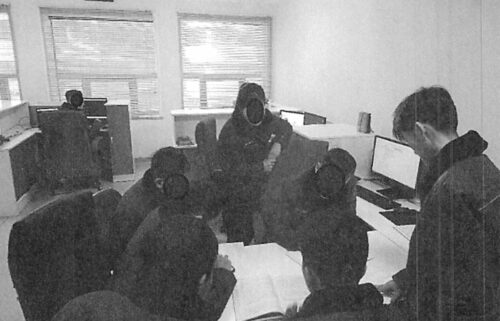Zillow exec: Why we changed our minds on remote work
Last month, Zillow joined a growing list of companies that have decided to allow most employees to work from home permanently, even after the pandemic.
But remote work wasn’t always embraced there.
In-person collaboration was considered a big part of the corporate culture and employees were expected to be in the office.
Chief People Officer Dan Spaulding spoke with CNN Business about what changed and what work at the real estate company might look like in the future. Here’s what he had to say:
(This interview has been edited for clarity and length)
What does having the flexibility to work from home indefinitely mean to employees?
For the vast majority of our employees, we are committing that we’re going to be a flexible employer of the future. That means for some workers, they may never come back to an office. We are committed to keeping our offices and we are going to use our offices as a place where people will come and collaborate with their teams and other teams. We will also have an office available to work in when, say, they have small children at home or they have situations where they have a lot of roommates and they are going to want a place to go and work.
But we also recognize that there is a balance between where people can be most effective and that balance is unique for all of us. For some people, that may mean coming into the office a couple days every month, and other people may want to come into the office three or four days a week just because of how their situation sets up.
Why did Zillow discourage working from home in the past?
Zillow has grown from a startup to the brand and company that we are today in a relatively short period of time. So much of our growth — and frankly our culture — was defined by in-person collaboration.
We have a lot of people, particularly in leadership, that were really wedded to the way we all grew up in the workplace, which was, you came to work five days a week and you started your meetings at 9:00 and tried to end your meetings at 5:00.
They’d been in that rhythm for 10, 20, 30 years of our professional careers and I think there was a belief, that wasn’t just isolated to us, that if people weren’t in the office that they were doing something else, and maybe that something else was not being focused on their role.
Our employees have been as dedicated and as productive, and frankly as supportive and connected as we’ve ever seen.
I will be honest, there was a lot of tension between leadership and our employees about the ability to be a more flexible employer. That tension had grown over time as you had a new generation of employees in the workplace who are used to asynchronous communication tools [such as email] — they were agitating for more flexibility.
Covid has been horrible in so many ways for us as a country, but I think it has forced us to really start using technology for what technology can do here, which is really free us from some of those old rhythms.
Will there be any changes to employee benefits, perks or compensation if employees decide to work from home permanently?
Yes. There is no way that there won’t be.
There is a lot of trepidation from our employees that: ‘If I move, what is going to happen to my pay?’ And yeah, we are going to have to figure that out. Are we going to pay the same rates in Iowa that we pay in New York or San Francisco? We are actively working through what is the coherent strategy around managing that in a fair and equitable way for where employees live.
We do that already today: We have employees in Atlanta, New York and San Francisco and there is different cost of living within those cities.
This is not about taking things away from our employees — it doesn’t mean because somebody works remotely permanently that we are going to use that as an opportunity to cut their pay or benefits. In fact, we are trying to stay ahead of this: We believe this is the future of work and we think a lot of other companies are going to try to figure this out. We want to be one of the first to figure this out.
On the benefits front, we don’t predict change to medical benefits that we provide to employees. What is going to be different is a lot of our benefits today were built around commuting and built around supporting wellness in the office. We do anticipate that as more people are opting for a hybrid world or a remote world, we aren’t going to have to pay for bus passes anymore or pay for parking in certain locations anymore. And those costs aren’t going to go away, they are going to shift.
We aren’t looking at this as a massive cost cutting. We actually predict many of our employee costs are going to go up over the next couple of years while we make this shift.
How are you going to measure and evaluate success?
That is the million-dollar question. We are tracking all of our productivity measures in almost the exact same way that we were in the office, whether it’s call time for people that are connecting to customers, number of loans that are closed, housing transactions, etc.
There aren’t specific new measures of productivity because people are working from home. We are taking the position to evaluate people on the work they do. Does it matter where they get that work done? We don’t think so.
We just completed a really strong quarter and we did that quarter not just from home, but under the duress of figuring all of this out on top of the duress that many of us are under as caregivers for parents and children in our homes.
We are looking at email traffic and when people are working, and we are getting interesting insights there. For me, I get up early and this is a time where I can really be flexible and get a lot of things done. People on my team who have small children — they are the exact opposite. The early morning time, they really need till about 9:00 or 10:00 to get settled.
What has Zillow done to help working parents struggling with balance?
This is really, really hard on parents. For us, we have three phases of caregiver assistance right now: That first phase is the most important in my opinion — it’s actual flexibility in your scheduling. We’ve done diligent work for every job in the company to be as flexible as possible to give our employees the ability to line up a schedule that works with whatever their needs are. And that may mean some people need to start later, some people need to finish earlier in the day, some people prefer to take a later shift on their customer calls. Our managers are doing real work with employees to not just say ‘hey we will be flexible with you,’ but actually build that flexibility into a detailed plan so we can manage the workload across those employees.
The next step is we are working with partner Bright Horizons to provide back-up care… whether it’s in their home or support in a clean and safe daycare center for their kids.
And the final piece is caregiver leave that is flexible, to give people paid time away if they are dealing with a caregiver need. There is a lot of focus rightly on children and the challenges that we are having as parents, but the pandemic is also stressing people who care for aged family members in a profound way.
How has the company worked to maintain its culture and show appreciation to workers when everyone has been remote?
There is a $200 stipend we are providing for work-from-home equipment, but we are also giving employees the ability to safely come into the office and remove some of their monitors, their office chairs, their basic computer supplies like their mice and keyboard.
We are trying a whole range of things to both engage our employees right now and to start to define what are some new working norms that are really going to work for us in the future. We are doing music events, virtual art classes, meditation classes, children’s yoga.
[We’re] trying to find ways to provide some respite for people as they go through their day because Zoom fatigue is real and navigating work and everything else we have going on is real.
We are also using this time to experiment with what works for team meetings. We are trying to start every meeting five minutes from the top or the bottom of the hour so that you always have a five-minute buffer to give your mind a break between meetings and a physical rest break. And starting to try and shave off how long people are spending in meetings.
We also keep experimenting with completely changing the definition of what does a meeting really mean. We have some teams that are experimenting with meetings that are 100% in Slack. You’re spending time typing questions back and forth and having a conversation over Slack and experimenting with a non-conversation meeting.
It goes to the whole conversation, whether it’s benefits, compensation or meeting norms and structure, we just think this is all going to evolve and change so much over the next couple of years that we want to learn from our employees as we go through this.




